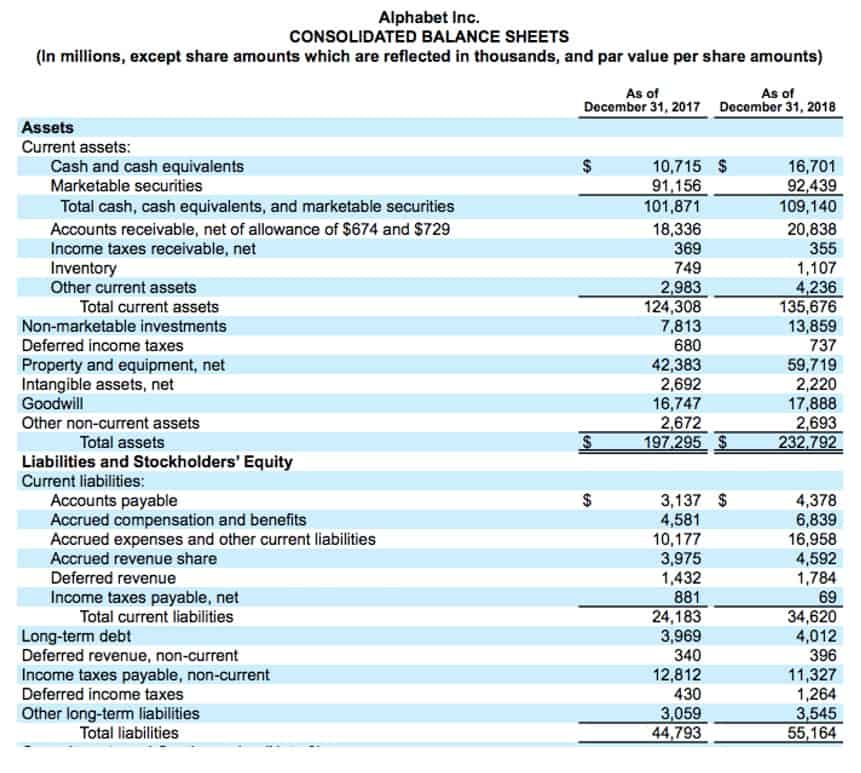Trumps Education Department Shocks with Support of Bidens Financial Value Transparency and Gainful Employment Rule
Trumps Education Department Shocks with Support of Bidens Financial Value Transparency and Gainful Employment Rule

Our team can assist with everything from internal reviews and data analysis to staff training and policy development. According to a Financial Aid Services (FAS) survey, 51% of institutions report being only somewhat confident in their team’s understanding of today’s financial aid regulations. Schools should not exclude any students from reporting, whether they use transitional or standard reporting. The Department will apply the appropriate exclusions for students when calculating the D/E and EP measures. Schools should also use one of the two methods described above when reporting award year values in the AA Detail Record for students who are currently enrolled in more than one program at the institution as of June 30. Under the second option, if the institution can document the actual amounts, it may attribute those amounts to each program.
- And both are indeed significant policy points for the current administration, and part of the reconciliation discussion presently taking place on the Hill.
- The regulations are intended to provide more data about student debt, financial aid gaps, and completion and success rates.
- There’s also the possibility that some programs could fail the D/E or earnings premium tests and face sanctions like consumer warning requirements or even loss of federal aid eligibility for GE programs.
- At the same time, the regulation creates, for the first time, a new disclosure framework applicable to educational programs offered by all institutions participating in the Title IV, Higher Education Act (HEA) federal student aid funding programs.
- Significantly, DCL GEN notes the overlap of the FVT/GE Final Rule with new ED Financial Responsibility and Administrative Capability regulations, which are also effective July 1, 2024.
- Programs that exceed the established thresholds for either the D/E rates or earnings premium measures could face various sanctions and requirements for consumer warnings.
New and Updated Financial Value Transparency and Gainful Employment FAQs Now Available
All GE or Eligible Non-GE Programs unless the program is part of a group of substantially-similar programs (programs within a 4-digit CIP code level at any credential level) which do not have at least 30 completers over the Budgeting for Nonprofits four most recently completed award years. As announced in EA GE-24-08, the Department has updated the deadlines for both of these activities in recognition of the additional time schools need to prioritize their work on the FAFSA. SAIG Enrollment – As a reminder, institutions that plan to report FVT/GE data using the batch process need to enroll a Student Aid Internet Gateway (SAIG) TG Mailbox for NSLDS FVT/GE reporting. NSLDS Reports – Detailed information about three new reports to assist schools with the FVT/GE reporting requirements is available in the April 12, 2024 Electronic Announcement.
What is the deadline to finalize the FVT/GE Completers List?
For this year, as mentioned above, schools have additional time to evaluate their Completers Lists and must complete that process by January 15, 2025. Institutions must report — and ED also will include in its determination of a program’s what is financial transparency “median annual loan payment” — private education loans incurred for enrollment in the program and any other amounts owed by program completers (including any institutional extensions of credit or unpaid institutional charges). The amortization period applied to a student’s debt depends on the credential level of the program (as was true in the 2014 rule), and the interest rate applied to the calculation would be a specified three-year or six-year average also based on credential level. In their final form, these regulations require that in order to maintain participation in federal student financial aid programs under Title IV of the Higher Education Act (Title IV), any GE program must meet both a debt-to-earnings (D/E) rate measure and also an earnings premium (EP) benchmark.
Trump’s Education Department Shocks with Support of Biden’s Financial Value Transparency and Gainful Employment Rule
- In a change from the Proposed Rule, the Final Rule also permits institutions to avail themselves of a “transitional” reporting period and metrics for all eligible programs for the first six years in which FVT reporting occurs under the rule.
- For a set of programs that initially qualify for the exclusion but later must report, here is an example of how that pattern may apply.
- Nearly all programs at for-profit colleges, as well as certificate programs at nonprofit institutions, are subject to the rule.
- The FVT/GE regulations define “institutional grants and scholarships” in 34 CFR 668.2 as “assistance that the institution or its affiliate controls or directs to reduce or offset the original amount of a student’s institutional costs and that does not have to be repaid.
- This includes the total number of recipients and non-recipients of Title IV and HEA funds enrolled in the program as well as student-level data for all recipients of Title IV and HEA funds.
- The D/E rates generally will be calculated using a multiyear cohort of graduates, in most cases reflecting completers from a two-year period, specifically the third and fourth Title IV award years prior to the year for which the most recent data is available at the time of calculation.
Institutions would be wise to start preparing sooner rather than later by assembling cross-functional reporting teams, taking stock of all programs and completers data, and developing processes to collect all required data elements. Critics argue that looking only at early career earnings fails to account for the lifetime value of many degree programs. There are also potential issues around comparing regional economies and labor markets when the earnings benchmarks are set at the state level. Programs that exceed the established thresholds for either the D/E rates or earnings premium measures could face various sanctions and requirements for consumer warnings. For GE programs specifically, failure to meet the standards for two out of three consecutive years could ultimately lead to a loss of Title IV eligibility.
G-Q1: Are non-Title IV-eligible educational programs subject to the FVT/GE requirements? (Added April 5,

In September 2024, the parties filed cross motions for summary judgment, and the Department filed its opening brief in support of summary judgment robustly defending the rule. NACUA Briefings are intended for NACUA members only and for their colleagues at member institutions. Members may freely share information included as part of a Briefing with their colleagues at member institutions but should not share the information in a manner that could result in broader public distribution. Institutions need to stay proactive to navigate what’s ahead, including new deadlines, evolving compliance expectations and potential regulatory risks. For programs that are offered exclusively through distance education or correspondence courses, schools should leave the fields for State # in MSA of Main Campus blank, and report “X” for “Not Applicable” in the fields for Program Prepares Licensure in MSA State #. In such a situation, the institution should report on all the disbursements that were made at the time that reporting is completed on or before October 1.
NSLDS Professional Access – NSLDS Financial Value Transparency and Gainful Employment Reports (Updated Dec. 13,

Bond will continue to inform clients as we learn more specifics about the planned roll-out. The anticipation of the first official release of FVT/GE metrics in early 2025 has been established as a pivotal moment for evaluating the impact of these regulations on assessing the quality and financial transparency of various higher educational programs. The FVT/GE regulations encompass a wide array of educational programs, explicitly including those leading to degrees at public, private non-profit and for-profit institutions. Limited exemptions are specified for certain types of programs, such as those designed for transitional postsecondary students or those involved in prison education. The final rule establishes new institutional reporting requirements due no later than July 31 following the date these regulations take effect.
Previously, institutions were instructed to report total amounts for students who completed or withdrew from Eligible Non-GE Programs that include only enrollment in the program that the student completed or from which the student withdrew. The user guide now instructs institutions to report total amounts for students who completed or withdrew from Eligible Non-GE Programs that include enrollment in all programs at the same credential level at the institution. The Financial Value Transparency (FVT) regulations and the Gainful Employment (GE) regulations are actually two separate but related sets of requirements from the U.S. The bookkeeping GE rules apply specifically to non-degree programs like certificates at public and private non-profit institutions, as well as nearly all programs at for-profit colleges.
- The Department wants to enhance transparency around the costs and outcomes of college programs to help students make more informed choices.
- For example, if a student took out $20,000 in private loans while enrolled at the institution and the institution has documentation that $12,000 of that amount was used to cover educational costs for one of its programs, only the remaining $8,000 is attributed to the second program.
- Beginning on July 1, 2026, an institution must provide a warning to students and prospective students if the GE program could become ineligible for the next award year based on its next calculated D/E rate or EP measure.
- Institutions may also wish to refer to our free higher education webinar series, which includes several webinars and videos from recent months discussing the status of the GE Rule, the regulatory framework, key metrics, reporting and disclosure requirements, and related topics.
- Institutions will likely need to devote significant staff time and resources to compiling and submitting those annual reports.
- A First-Professional Degree is the first degree that signifies both completion of the academic requirements for beginning practice in a given profession and a level of professional skill beyond that normally required for a bachelor’s degree.
- The Department provided an outline of Final Rule D/E rate and EP measure calculations and thresholds at its 2023 Federal Student Aid conference—Session BO6 Gainful Employment; slides are available here.

The Department will generally calculate these metrics for each Title IV program annually, based on information about eligible program completers obtained from the institution, matched against data reflecting the earnings of those program completers obtained from a yet-to-be-named agency. After confirming with institutions the “completer list” for each educational program cohort (differentiated by using six-digit CIP codes), ED will obtain from a still-unspecified federal agency the “median annual earnings” of the completing cohort. If a program’s Annual D/E Rate exceeds 8% and its Discretionary D/E Rate exceeds 20%, it will be considered to fail the D/E metric and will be designated by ED as a “high debt burden” program.

